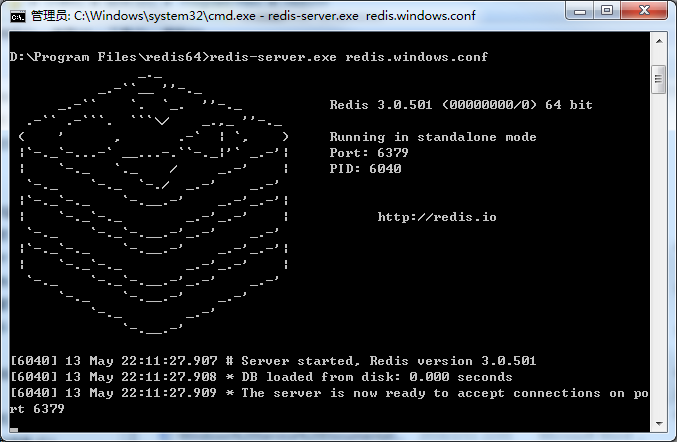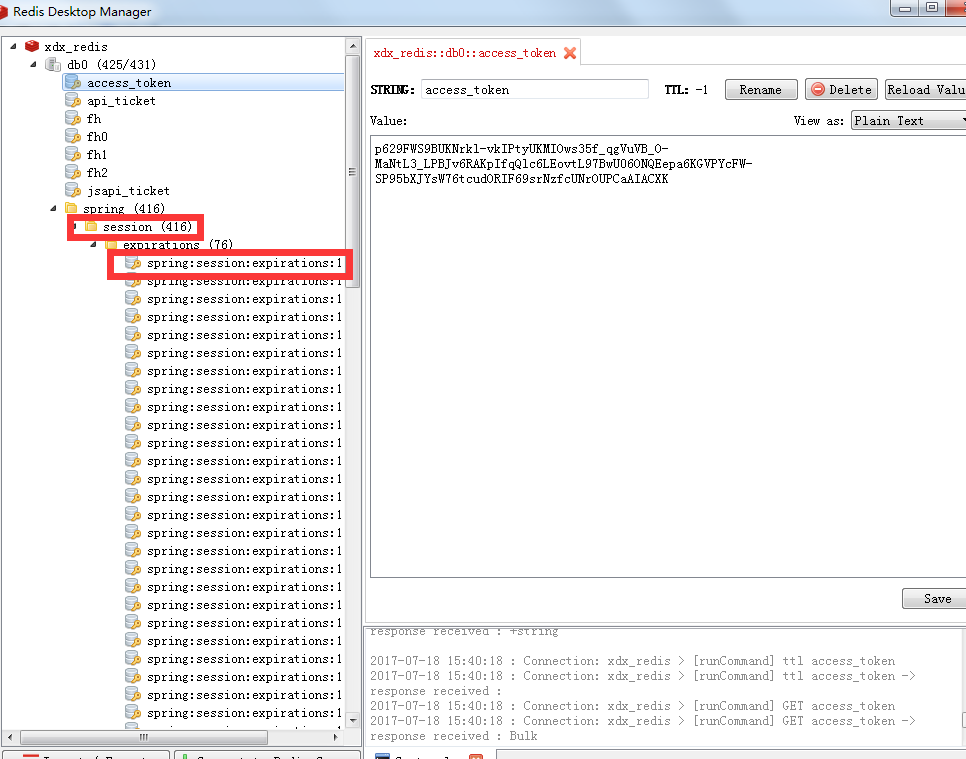您好,登錄后才能下訂單哦!
您好,登錄后才能下訂單哦!
這篇文章主要介紹“nginx+redis怎么實現session共享”,在日常操作中,相信很多人在nginx+redis怎么實現session共享問題上存在疑惑,小編查閱了各式資料,整理出簡單好用的操作方法,希望對大家解答”nginx+redis怎么實現session共享”的疑惑有所幫助!接下來,請跟著小編一起來學習吧!
1.第一步是安裝redis,我的服務器是windows的,下載的是免安裝版本,解壓以后就可以了,其目錄如下。一開始redis是默認不需要密碼,如果想要設置密碼,可以進入redis.windows.conf文件下找到requirepass,刪除前面的#號,在其后面便可以設置密碼。

2.從cmd進入redis的根目錄,鍵入如下指令:redis-server.exeredis.windows.conf。這樣就可以啟動redis了,如果啟動成功,則會出現下面畫面。當然還可以修改conf文件,加上密碼。requirepass xxxxx

3.接下來我們就可以做一些配置工作,來實現session數據的全局緩存。
1)首先是添加jar包,如果你是maven項目,需要在pom.xml加入下面代碼
<!-- redis --> <dependency> <groupid>org.springframework.session</groupid> <artifactid>spring-session-data-redis</artifactid> <version>1.3.1.release</version> <type>pom</type> </dependency>
如果不是maven項目,你需要加入下面這些jar包。

2)編寫redis.properties,代碼如下
redis_isopen:yes #主機地址 redis_hostname=xxx.xxx.xxx.xxx #端口 redis_port=6379 #密碼 redis_password=xxxxxxxx #連接超時時間 redis_timeout=200000 redis_maxidle:300 redis_maxactive:600 redis_maxwait:100000 redis_testonborrow:true
基本上與我們配置數據庫的連接語句類似。
3)編寫spring-redis.xml配置文件,這個文件配置關于redis的一些基本信息。
<?xml version="1.0" encoding="utf-8" standalone="no"?>
<beans xmlns="http://www.springframework.org/schema/beans"
xmlns:context="http://www.springframework.org/schema/context" xmlns:tx="http://www.springframework.org/schema/tx"
xmlns:util="http://www.springframework.org/schema/util" xmlns:xsi="http://www.w3.org/2001/xmlschema-instance"
xsi:schemalocation="http://www.springframework.org/schema/beans http://www.springframework.org/schema/beans/spring-beans.xsd http://www.springframework.org/schema/context http://www.springframework.org/schema/context/spring-context.xsd http://www.springframework.org/schema/tx http://www.springframework.org/schema/tx/spring-tx.xsd http://www.springframework.org/schema/util http://www.springframework.org/schema/util/spring-util.xsd ">
<!-- session設置 maxinactiveintervalinseconds為session的失效時間,單位為秒-->
<bean
class="org.springframework.session.data.redis.config.annotation.web.http.redishttpsessionconfiguration">
<property name="maxinactiveintervalinseconds" value="3600"></property>
</bean>
<!-- redis連接池 -->
<bean id="poolconfig" class="redis.clients.jedis.jedispoolconfig">
<property name="maxidle" value="${redis_maxidle}" />
<property name="testonborrow" value="${redis_testonborrow}" />
</bean>
<!-- redis連接工廠 -->
<bean id="connectionfactory"
class="org.springframework.data.redis.connection.jedis.jedisconnectionfactory">
<property name="hostname" value="${redis_hostname}" />
<property name="port" value="${redis_port}" />
<property name="password" value="${redis_password}" />
<property name="timeout" value="${redis_timeout}" />
<property name="poolconfig" ref="poolconfig"></property>
</bean>
</beans>4)在application.xml(spring的主配置文件)需要加入redis.properties配置文件的掃描,如下。
<!-- 讀取redis參數配置 --> <bean id="propertyconfigurer" class="org.springframework.beans.factory.config.propertyplaceholderconfigurer"> <property name="locations"> <list> <value>/web-inf/classes/redis.properties</value> </list> </property> </bean>
5)在主配置文件中引入spring-redis.xml,如下。
<import resource="spring-redis.xml" />
6)在web.xml中,加入關于session的過濾器,只有這樣session才會被redis所操縱。
<filter> <filter-name>springsessionrepositoryfilter</filter-name> <filter-class>org.springframework.web.filter.delegatingfilterproxy</filter-class> </filter> <filter-mapping> <filter-name>springsessionrepositoryfilter</filter-name> <url-pattern>/*</url-pattern> </filter-mapping>
這樣以后,我們就實現了redis對session的管理。
7)我們可以安裝一個redis的客戶端來查看里面的數據,叫做redis desktop manager。如下圖,很好用,可以看到redis數據庫中的數據。

ps.再退出的時候,需要這樣寫才不會出錯。(ssh項目)
public string yipinexit(){
iterator<string>keys=session.keyset().iterator();
while(keys.hasnext()){
string key=keys.next();
session.remove(key);
}
return "yipinexit";
}到此,關于“nginx+redis怎么實現session共享”的學習就結束了,希望能夠解決大家的疑惑。理論與實踐的搭配能更好的幫助大家學習,快去試試吧!若想繼續學習更多相關知識,請繼續關注億速云網站,小編會繼續努力為大家帶來更多實用的文章!
免責聲明:本站發布的內容(圖片、視頻和文字)以原創、轉載和分享為主,文章觀點不代表本網站立場,如果涉及侵權請聯系站長郵箱:is@yisu.com進行舉報,并提供相關證據,一經查實,將立刻刪除涉嫌侵權內容。